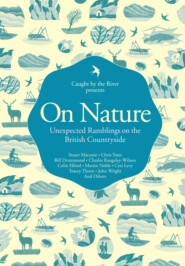По всем вопросам обращайтесь на: info@litportal.ru
(©) 2003-2025.
✖
How Can I Stop Climate Change: What is it and how to help
Настройки чтения
Размер шрифта
Высота строк
Поля
1979 First World Climate Conference highlights concerns about levels of carbon dioxide in the atmosphere. The Intergovernmental Panel on Climate Change (IPCC) (see p.54) is established.
1987 The Brundtland Report, Our Common Future, makes the case for, and provides a definition of, sustainable development.
1990 The Intergovernmental Panel on Climate Change (IPCC) publishes its first assessment; it says climate change is a concern and human activities are likely to be contributing.
1992 Rio Earth Summit. World leaders meet in Rio de Janeiro, Brazil, to discuss the state of the planet, signing up to the United Nations Framework Convention on Climate Change.
1997 Kyoto Protocol. The first legally enforceable international treaty designed to cut greenhouse gas emissions. Signed by 141 countries, the Kyoto Protocol eventually comes into force in 2005.
2001 Newly-elected US President George Bush refuses to ratify the Kyoto Protocol. ‘I oppose the Kyoto Protocol because it exempts 80 per cent of the world, including major population centres such as China and India, from compliance, and would cause serious harm to the US economy.’
2002 Larsen B ice shelf breaks up. A piece of ice a quarter the size of Northern Ireland falls into the sea in the Antarctic.
2003 European heat wave. Some 35,000 Europeans die as a result of extreme temperatures.
2004 UK Prime Minister Tony Blair is ‘shocked’ by scientists’ warnings on climate change. He tells reporters that ‘unchecked climate change has the potential to be catastrophic in both human and economic terms’.
2005 UK Prime Minister Tony Blair makes climate change a priority for the G8 rich countries summit at Gleneagles. UK emissions continue to rise.
2006 UK Government agrees to introduce new legislation designed to tackle climate change. UK emissions continue to rise.
2007 The IPCC and former US Vice President Al Gore share the Nobel Peace prize. Gore’s film An Inconvenient Truth, highlighting the threat posed by climate change, wins an Oscar. Japan announces that climate change will be a priority at meeting of the G8 industrialised countries.
breaking down the UK’s carbon footprint
When looking at where our carbon dioxide emissions come from we can slice the cake a number of ways. The flow chart shows one breakdown by end-user. But a common way to think about emissions is in terms of three key end-uses – electricity, heat and transport.
electricity
Demand for electricity is responsible for roughly a third of the country’s carbon dioxide emissions. That’s because we rely on fossil fuel: large, centralised power stations burn coal and gas to generate most of our electricity. The UK does produce some electricity using renewable sources such as wind and hydropower, but at the moment this provides only around 4 per cent of our electricity.
Demand for electricity in the UK has doubled since the 1970s – partly as a result of the growing number of smaller households, most with their own fridge, freezer and microwave. Over this period power stations have become more efficient, but a diminishing supply of North Sea gas, combined with high oil and gas prices, have led generating companies to turn to coal. Coal produces higher levels of carbon dioxide emissions than gas does and can cause other pollution problems as well.
heat
If we’re looking at our footprint in terms of the end use of the energy, heating homes, offices and public buildings plus the heat used in industry actually account for the biggest slice of
a snapshot of the UK’s CO2 emissions in 2005
The areas of the boxes show how each sector contributes to the UK’s total of 595 MtCO2 in 2005. We’ve included international aviation and shipping. Source: BERR/Friends of the Earth.
the UK’s emissions. Industry and domestic consumers alike How we heat our rely mainly on oil and gas. Total demand for heat energy is homes falling slightly, partly thanks to improvements in efficiency. And despite the recent trend towards coal, the switch to gas that has been happening since the 1970s means that carbon emissions from heat generation have been falling. In our homes, gas is the main source of energy – and domestic use is rising slowly.
How we heat ourhomes
Source: BERR
Carbon emissions from industry (2002)
power hotspots
If we look at our emissions in terms of broad economic sectors, the biggest sources are business and transport and our homes.
About 40 per cent of the UK’s carbon emissions come from businesses, with industry accounting for about half of that. The chemicals industry accounts for a fifth of all the energy used in industry, with food, drink and tobacco the second biggest industrial consumer. The UK’s service economy – i.e. banking, insurance and shops – is less energy-intensive, but as the dominant sector still uses lots of heat and power. In fact services account for a fifth of our greenhouse gas emissions.
As individuals our main energy-consuming activity is heating our homes. Private transport comes second – followed by food and drink, health and hygiene and heating water. Holidays, clothing, cooking and books and newspapers come low down on the list.
transport
Transport is often referred to as the problem sector: since 1990 transport emissions have risen by a fifth. Some 22 per cent of UK greenhouse gases come from road vehicles – perhaps not surprising since running a car today is cheaper in real terms than it was ten years ago. But aviation is a fast-growing problem.
According to the Department for Transport, aviation emitted 2.5 million tonnes in 2005. But this figure only includes domestic civil aviation. If the UK’s share of international aviation is included (calculated as half of all flights taking off or landing in the UK), then emissions for aviation were more than ten times that. Even then a crude measure of carbon dioxide emissions from aviation does not reveal the true extent of the impact that flying has on the climate. Because aeroplanes create pollution high in the upper atmosphere, the impact of the emissions is magnified. How much of a difference this makes is still being studied, but conservative estimates suggest UK emissions from aviation account for 13 per cent of the UK’s climate change impacts. Emissions from shipping are also on the rise, as more and more goods are traded around the world.
Transport emissions (2006)
Excluding international flights and shipping
Including international flights and shipping
UK transport emissions are big and getting bigger. Watch out for the way they’re reported: emissions from international aviation and shipping have not generally been included. But when they are it’s clear how serious a problem air travel presents.
our carbon exports
None of the above takes account of the greenhouse gases the UK is responsible for elsewhere in the world. British companies play a huge role in international trade and many of the goods they sell and that UK consumers buy are manufactured overseas. Yet the energy used to produce them does not show up on the UK greenhouse gas inventory.
Take one of the UK’s most successful companies, British Petroleum (BP). Its direct activities, such as exploration, drilling and refining, combined with the sale of its products, are estimated to have resulted in emissions of nearly 1.5 billion tonnes of carbon dioxide in 2004. That’s more than double the carbon dioxide produced by the UK. According to one financial company, emissions from all the oil, gas and coal sold by FTSE 100 companies is likely to be close to fifteen per cent of the global total from all fossil fuels.
farmland
According to government figures, agriculture is responsible for 8 per cent of the UK’s greenhouse gas emissions. This is largely from methane and nitrous oxide rather than energy use.
Intensive farming relies on chemical fertilisers, which increase the amount of the greenhouse gas nitrous oxide in the atmosphere. Fertiliser production is the largest source of nitrous oxide emissions in the world and producing fertiliser itself relies heavily on fossil fuels. Making and transporting fertilisers is the largest source of carbon dioxide emissions in the farm sector, but these emissions are not included in the government’s figures for agricultural emissions. Sheep and cows emit methane as a result of the digestive process, resulting in high levels of emissions from livestock and dairy farming.
Meat farming is responsible for two thirds of the nitrous oxide and more than a third of the methane associated with human activity. One study found that every 1 kg of beef produced results in emissions of more than 36 kg of carbon dioxide equivalent: two-thirds of the energy used goes to produce and transport cattle feed. Producing food for livestock and clearing land for grazing is having a huge impact on valuable forests. Greenhouse gas emissions from livestock have been put at around 18 per cent of the global total. And demand for meat is rising, especially in the developing world: meat production is predicted to double between 2000 and 2050.
the UK’s carbon footprint
Despite the government’s recognition that climate change is a greater threat than terrorism, UK emission levels have continued to rise over the past decade.
Some parts of the economy have started to reduce their carbon footprint, but emissions from transport and electricity generation are rising – the latter the result of the recent switch back to coal in power stations.
The government’s draft Climate Change Bill set a target of cutting carbon dioxide emissions by 60 per cent by 2050. But science suggests that this will not be enough. ‘It is clear to us that climate science suggests that this figure may not be adequate to prevent global temperatures rising above dangerous levels,’ said a House of Commons Joint Committee on the Draft Climate Change Bill in August 2007.
The crucial factor is not the target at some distant point in the future, but how much carbon dioxide is building up in the atmosphere. Making cuts sooner rather than later will result in less carbon in total. If the UK is committed to keeping global temperatures within 2°C it may need to look at cuts of 90 per cent by 2050.
eating our way to climate change
The contribution of food to global warming doesn’t stop at the farm gate. More than 30 per cent of greenhouse gas emissions in Europe are estimated to come from the food and drink sector. In the UK the food chain contributes more than one in every five tonnes of greenhouse gas emissions.











